FLYING CARPET | Fabrication
The Flying Carpet is a piece of microarchitecture that converts a long, narrow volume of space in Angell Elementary School into a reading, writing, lounging, and play space for the children occupants of the building. Located on the second floor among the 3rd, 4th, and 5th grade classrooms, the Flying Carpet was designed to retain the existing programmatic uses of the space but give them beautiful and lively accommodation. Folk stories in many cultures tell of a mythical flying carpet that transport their riders to distant places faster than the wind. Recalling these stories from our own childhood, the flying carpet became the apt poetic metaphor for the space’s primary activities: reading, writing, and imagining… the fastest ways we know to travel elsewhere.
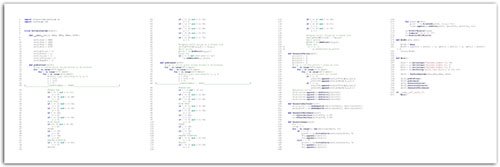
The computer script we wrote to generate the final form for the piece had to be able to produce widely varying sectional shapes, but also had to conform precisely to children’s body dimensions. Once written, we then could input conditional statements to control the table, bench, lounge, and variable “bump” heights.
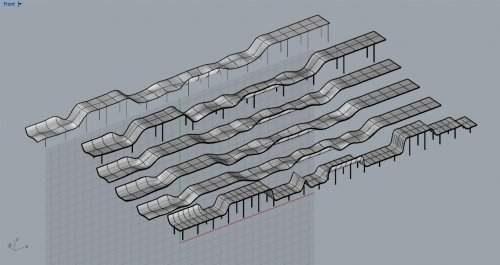
Our early variations explored the use of double curved surfaces and alternative leg supports.
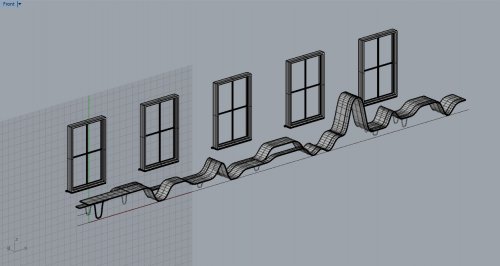
The final design responds to particular site conditions and utilizes the curvature and “landing” of the surface for self-support in addition to steel legs which follow the same geometry of the surface.
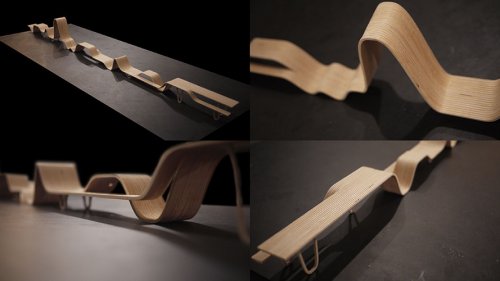
Since we were also going to be the fabricators on the project we made a series of scale models to study and refine the geometry in greater detail, and also to understand the process of fabrication and assembly of the final full scale piece.
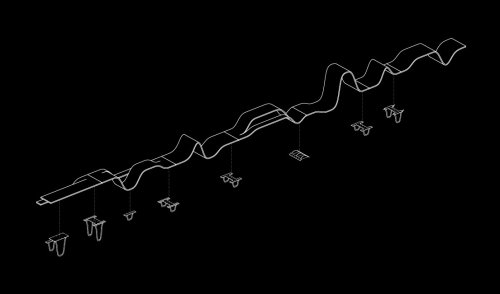
For ease of fabrication, transport, and assembly, the final design is divided into seven sections. The steel support legs also serve a secondary role of joining the sections to each other.
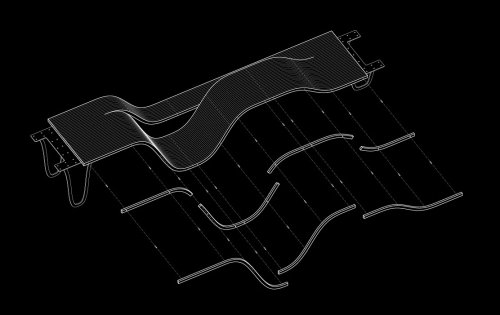
Each section is broken down into smaller elements which overlap to create a stronger bonding surface. Dowel holes are drilled in each part to facilitate alignment and rapid assembly.
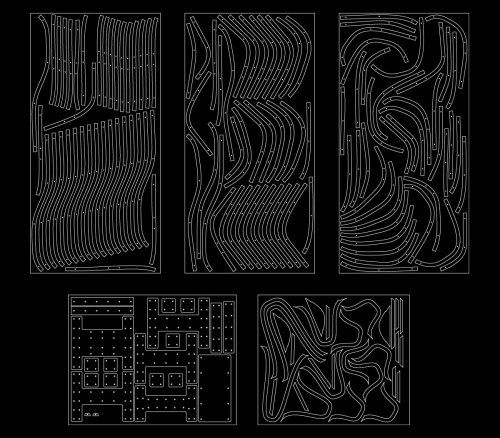
We developed cut sheets for CNC and Water-Jet cutting of both the wood and steel elements. It’s important to note that these were output directly from a 3D model to cutting files – no construction documents were made for the project.
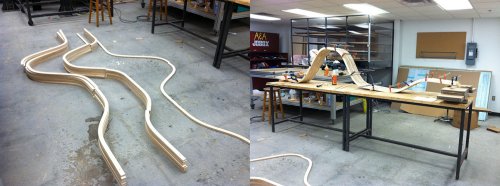
After CNC machining, elements are laid out in order prior to assembly. Sections are glued and clamped in stages.
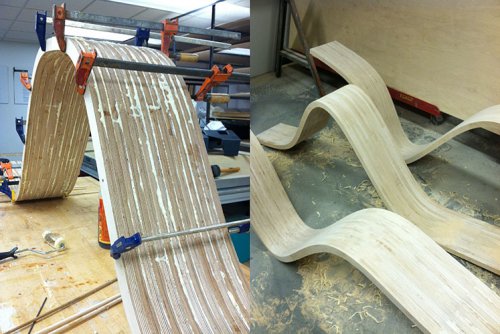
Parts are cleaned and sanded prior to section assembly.
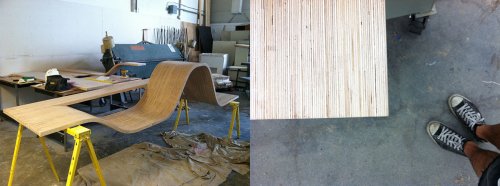
Final sanding and finishing of one of the sections.
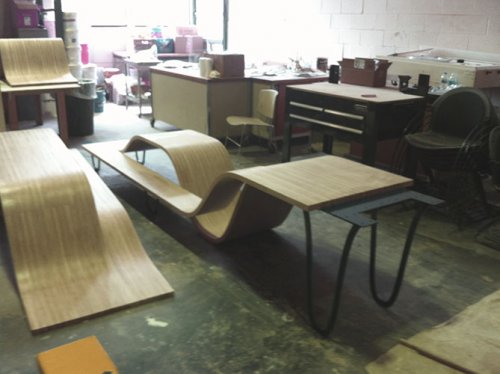
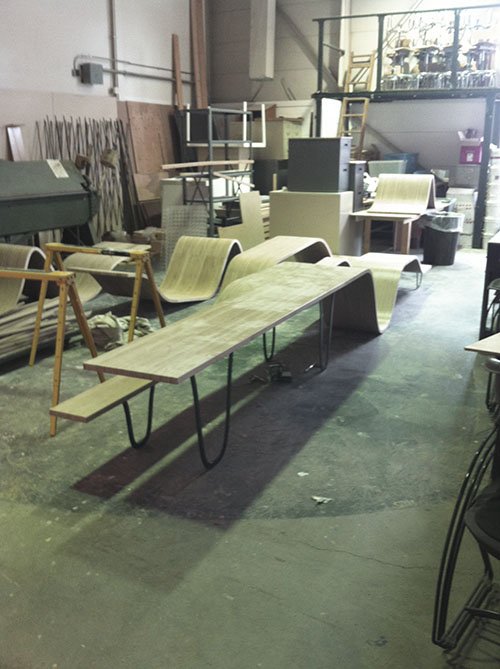
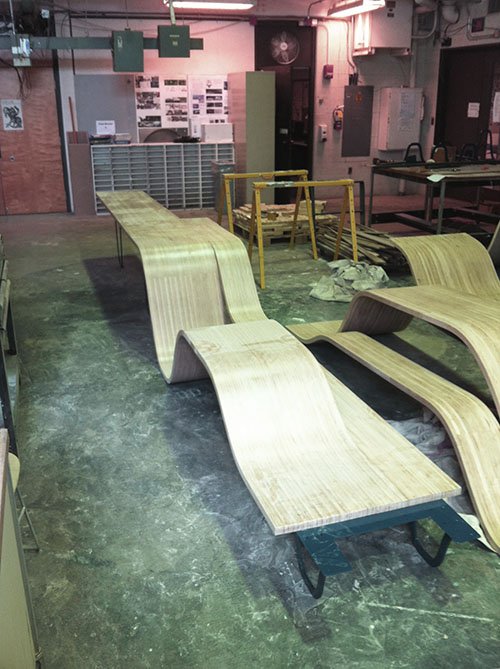
PROJECT TEAM
DESIGN: Glenn Wilcox and Anca Trandafirescu
MODEL FABRICATION: Jake Newsum and Secil Taskoparan
FABRICATION: Glenn Wilcox, Troy Hillman, Megha Chandrasekhar and Anca Trandafirescu
PHOTOS: Glenn Wilcox and Troy Hillman